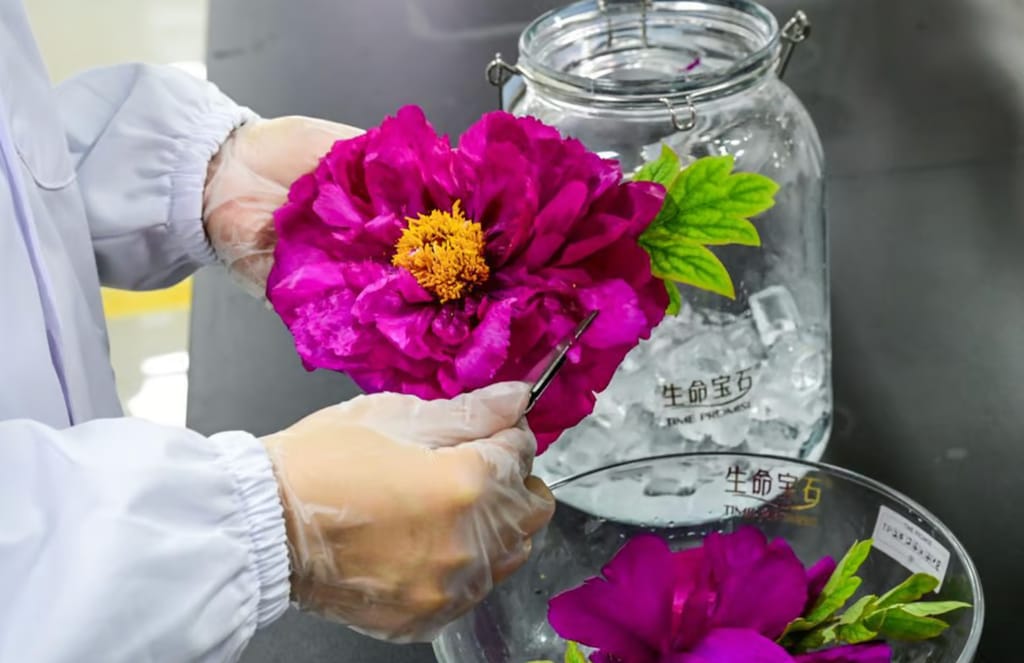
Scientists in China claim to have developed a lab-grown diamond using carbon atoms extracted from red peony flowers. The world’s first diamond created from peony-derived carbon atoms was unveiled on Wednesday in Luoyang, Henan Province, China.
The 3-carat diamond was extracted from red peonies at Luoyang’s national flower garden. It was donated to the Luoyang National Peony Garden by the Luoyang Time Promise Company.
How was the diamond made from red peony flowers?
“The diamond is valued at 300,000 yuan ($41,000). It is cultivated from peonies using our biogenic carbon extraction technology, subjected to high temperature and pressure, and then cultivated,” said Wang Jing, head of the company.
At the end of March, the peony garden collaborated with the company, using a nearly 50-year-old peony in the garden to carry out diamond cultivation.
Diamonds are made from carbon atoms found in various sources, like bones and hair. So, the method adopted extracts carbon components from a specifically developed device and then breaks the chemical bonds between the retrieved carbon atoms. The elements then recombine into a diamond structure before producing a diamond.
How are lab-grown diamonds different from natural diamonds?
According to the International Gem Society, lab-grown diamonds have the same optical, physical, and chemical qualities as natural diamonds, but are more affordable and ethically sourced. General Electric (GE) generated the first lab-grown diamonds in the 1950s.
While they are “real diamonds” created by scientists who replicate the exact conditions found in nature, lab-grown diamonds are significantly less expensive and form in a matter of months rather than the millions of years required by natural diamonds.
